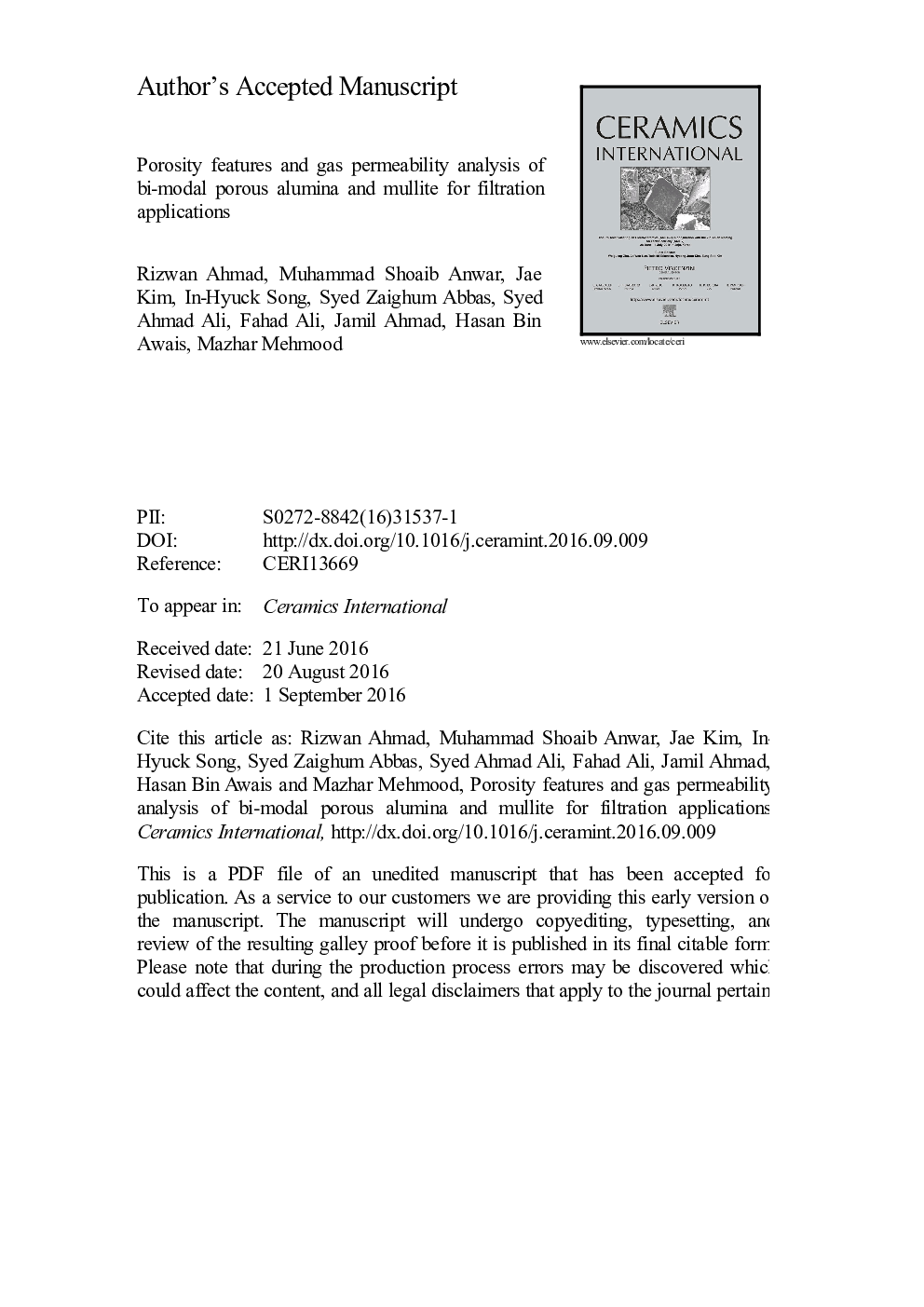| Article ID | Journal | Published Year | Pages | File Type |
|---|---|---|---|---|
| 5439352 | Ceramics International | 2016 | 37 Pages |
Abstract
Bimodal porous structures were prepared by combining conventional sacrificial template and partial sintering methods. These porous structures were analysed by comparing pore characteristics and gas permeation properties of alumina/mullite specimens sintered at different temperatures. The pore characteristics were investigated by SEM, mercury porosimetry, and capillary flow porosimetry. A bimodal pore structure was observed. One type of pore was induced by starch, which acted as a sacrificial template. The other pore type was due to partial sintering. The pores produced by starch were between 2 and 10 µm whereas those produced by partial sintering exhibited pore size of 0.1-0.5 µm. The effects of sintering temperature on porosity, gas permeability, and mullite phase formation were studied. The formation of the mullite phase was confirmed by XRD. Compressive strengths of 37.9 MPa and 12.4 MPa with porosities of 65.3% and 70% were achieved in alumina and mullite specimens sintered at 1600 °C.
Keywords
Related Topics
Physical Sciences and Engineering
Materials Science
Ceramics and Composites
Authors
Rizwan Ahmad, Muhammad Shoaib Anwar, Jae Kim, In-Hyuck Song, Syed Zaighum Abbas, Syed Ahmad Ali, Fahad Ali, Jamil Ahmad, Hasan Bin Awais, Mazhar Mehmood,
